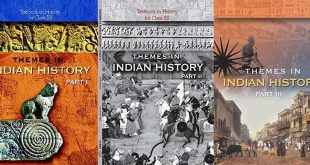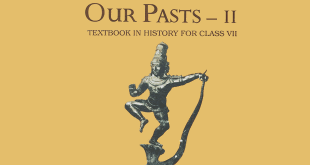Question: What are the factors on which the human capacity to convert natural resource into useful products depend?
Answer: The capacity of the people depends upon the following factors.
- They must be literate and should possess technical, vocational and professional skills.
- They must be provided with proper tools and machines.
- They must work hard and understand the dignity of labour.
- They must get balanced and nutritious food. Any country which wants to progress must take care of its natural and human resources.
Question: Which areas of the world are thickly and sparsely populated? Why?
Answer: Thickly populated Areas: The fertile river valleys and the industrial regions are densely populated. Eastern and southern Asia are densely populated. This is because intensive cultivation is practiced here.
In western Europe and east-central North America, the main reasons for high density of population are mineral resources, development of industries and climate suitable for human habitation. Every country of the world has some pockets of thickly populated areas. These are mostly the metropolitan urban areas.
Sparsely populated Areas: The sparsely populated areas are the hot deserts, cold deserts and the high mountainous areas. Tundra region in the north, the thickly forested areas of the Amazon and the Congo basins as well as the Sahara desert have sparse population. Here the physical environment is not favorable for human habitation.
Question: Write a short note on change of population.
Answer: The change of population means the change in the number of people living in a territory during a specific time, say a decade. Population change an be expressed either in absolute numbers or in percentage. Population change change depends upon-birth rate, death rate and migration.
Question: What is the difference in the population pyramid between a developed and an underdeveloped country?
Answer: Developed countries:
- If the birth rate and death rate are low, then the population pyramid is narrow at the base. This type of population pyramid represents the population of developed countries.
- The pyramid shows that the decrease in death rates allow more people to reach old age.
Underdeveloped countries:
- If the death rate as well as the birth rate are high, then the population pyramid is broad at the base and tapering towards the top. This type o population pyramid represents the population of underdeveloped countries.
- The pyramid shows that although the birth rates are high, still many children die in their infancy and thus very few people reach old age.
Question: Explain the fectors which affect the distribution of population.
Answer: Factors affecting distribution of tribes is as follows:
- Relief: The plains have higher density of population as compared to the mountainous regions. The steep mountain slopes restrict the availability of agricultural land, industries, transportation and settlement. The northern plains are the most densely populated areas in India.
- Climatic Conditions: Temperature and rainfall influence the concentration of population in any areas. Extreme climate discourages concentration while moderate climate favors human settlement. Most of the population of Canada lives in a narrow belt which has relatively warm climate.
- Natural Vegetation: Dense and inaccessible forests grow in hot and humid areas. Such conditions discourage population habitation. Therefore, the Amazon and the Congo basins have no large settlements and the population density is very low.
- Soil: The fertile alluvial and lava soils can support more population than the desert, mountain and laterite soils.
- Water Availability: Rivers are an important source of freshwater. They supply water for domestic purposes, agriculture, industries and transport. Thus, people tend to settle in the river valleys. Even in the deserts, oases have permanent settlements.
- Mineral Resources: The areas rich in mineral deposits attract people. This results in higher density of population. The gold mines in Australia attracted people to this otherwise barren desert land.
- Industries: The development of industries in any region provides employment opportunities. Thus, people migrate to such areas not only from the surrounding areas but also from far-off places. The industrial areas support a very high density of population as in north-eastern USA.
- Means of Transport: The economic activities are attracted to those areas which have an adequate and efficient network of transportation. Most of the cities are located either in the plains or along the coast, which provide adequate transportation facilities. Thus, such places are thickly populated.
- Urbanization: The urban centers have diverse economic activities. Moreover, the urban areas also provide better living conditions then the village. Thus, people migrate to cities in search of work. Urban areas have more than 5,000 persons living on per sq km of land.
- Government Policies: Sometimes, the government policies causes migration of people from one region to another. Under the British rule, Indians were sent to Malaya, Fiji and Mauritius to work on the plantations. The Blacks from Africa were brought to work on farms in America.
 Class Notes NCERT Solutions for CBSE Students
Class Notes NCERT Solutions for CBSE Students




